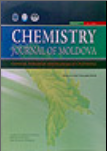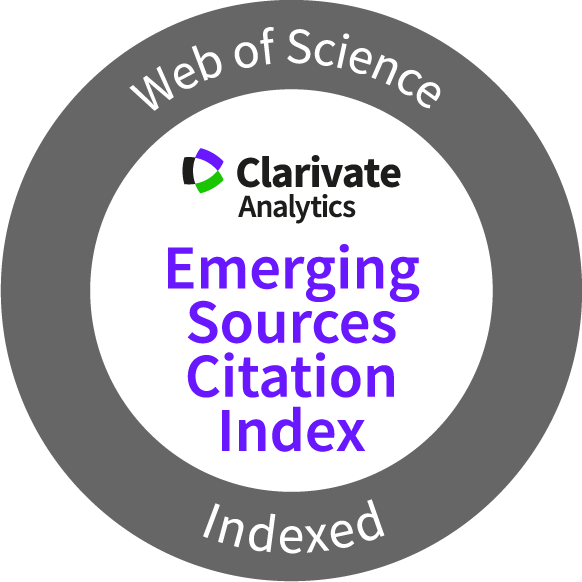Chemistry Journal of Moldova
Ecological chemistry
Author(s):
Field: Ecological chemistry
Type: Research paper
Issue: 2012 Volume 7, no.2
Pages: 93-97
S. Cibotaru
Field: Ecological chemistry
Type: Research paper
Issue: 2012 Volume 7, no.2
Pages: 93-97
Full Text (PDF): Download
DOI: dx.doi.org/10.19261/cjm.2012.07(2).09
Graphical Abstract: This paper presents the results of scientific research aimed at studying processes of obtaining activated carbon from wood charcoal. We presented methods for determining the structure parameters and specific surface of carbonic adsorbents. Scientific research results allow concluding that wood charcoal is a cheap and effective material for the synthesis of activated charcoal.
Downloads: 37
Author(s):
Field: Ecological chemistry
Type: Research paper
Issue: 2012 Volume 7, no.2
Pages: 89-92
T. Mitina, N. Bondarenco, O. Bunciuc
Field: Ecological chemistry
Type: Research paper
Issue: 2012 Volume 7, no.2
Pages: 89-92
Full Text (PDF): Download
DOI: dx.doi.org/10.19261/cjm.2012.07(2).10
Graphical Abstract: The paper presents the results of groundwater study from different sources, selected in v. Myndreshty, Telenesti district, in various villages of Cahul district and in artesian wells in and around Chisinau. Large differences were evidenced in water chemistry in different villages of one district, as well as within the same village. Was assessed thee compliance of analyzed water to quality requirements of drinking water.
Downloads: 33
Author(s):
Field: Ecological chemistry
Type: Research paper
Issue: 2012 Volume 7, no.2
Pages: 84-88
A. Saghatelyan, L. Sahakyan, O. Belyaeva
Field: Ecological chemistry
Type: Research paper
Issue: 2012 Volume 7, no.2
Pages: 84-88
Full Text (PDF): Download
Author(s):
Field: Ecological chemistry
Type: Review
Issue: 2012 Volume 7, no.2
Pages: 32-38
Inga Zinicovscaia
Field: Ecological chemistry
Type: Review
Issue: 2012 Volume 7, no.2
Pages: 32-38
Full Text (PDF): Download
DOI: dx.doi.org/10.19261/cjm.2012.07(2).16
Graphical Abstract: A critical need in the field of nanotechnology is the development of a reliable and eco-friendly process for synthesis of metallic nanoparticles. A number of different organisms, including bacteria, microalgae, yeast and fungi, have shown their ability to produce metal nanoparticles. But they have some drawbacks in providing better control over size distribution, shape and crystallinity. This review article presents an overview of microorganisms (bacteria and microalga) capable of producing silver and gold nanoparticles. This article is an extended abstract of a communication presented at the Conference Ecological Chemistry 2012.
Downloads: 61
Author(s):
Field: Ecological chemistry
Type: Review
Issue: 2012 Volume 7, no.2
Pages: 27-31
Inga Zinicovscaia
Field: Ecological chemistry
Type: Review
Issue: 2012 Volume 7, no.2
Pages: 27-31
Full Text (PDF): Download
DOI: dx.doi.org/10.19261/cjm.2012.07(2).17
Graphical Abstract: Due to its widespread industrial use, chromium has become a serious pollutant in diverse environmental settings. The main source of chromium pollution including the Republic o Moldova is industry. It is a great need to develop new eco-friendly methods of chromium removal. Biosorption of heavy metals is a most promising technology involved in the removal of toxic metals from industrial waste streams and natural waters.
This article is an extended abstract of a communication presented at the Conference Ecological Chemistry 2012.
Downloads: 33
Author(s):
Field: Ecological chemistry
Type: Review
Issue: 2011 Volume 6, no.1
Pages: 6-9
T. L. Kalabegishvili, I. Murusidze, D. T. Pataraya, E. Ginturi, M. V. Frontasyeva, E. I. Kirkesali, Gh. Duca, I. Zinicovscaia
Field: Ecological chemistry
Type: Review
Issue: 2011 Volume 6, no.1
Pages: 6-9
Full Text (PDF): Download
DOI: dx.doi.org/10.19261/cjm.2011.06(1).01
Graphical Abstract: The increasing contamination of soil, sediment, and water with heavy metals by natural and industrial processes is a worldwide problem. Many bacteria and microalgae have demonstrated ability to absorb toxic elements. To study mercury biosorption by bacteria Arthrobacter globiformis and microalga Spirulina platensis neutron activation analysis (NAA) was applied. The process of mercury biosorption by these media was described by Freundlich and Langmuir-Freundlich Model. Both microorganisms showed a great potential to be used as biosorbing agents for mercury removal from the environment.
Downloads: 28
Author(s):
Field: Ecological chemistry
Type: Research paper
Issue: 2010 Volume 5, no.2
Pages: 30-36
Angela Lis, Gheorghe Duca, Elena Bunduchi, Viorica Gladchi, Nelli Goreaceva
Field: Ecological chemistry
Type: Research paper
Issue: 2010 Volume 5, no.2
Pages: 30-36
Full Text (PDF): Download
DOI: dx.doi.org/10.19261/cjm.2010.05(2).03
Graphical Abstract: The current work represents the estimation of the buffering capacity on the Dniester River waters and its tributaries between November 2008 and October 2009.
Downloads: 23
Author(s):
Field: Ecological chemistry
Type: Research paper
Issue: 2010 Volume 5, no.2
Pages: 37-40
T. Lupaşcu, M. Ciobanu, V. Boţan, A. Nistor
Field: Ecological chemistry
Type: Research paper
Issue: 2010 Volume 5, no.2
Pages: 37-40
Full Text (PDF): Download
DOI: dx.doi.org/10.19261/cjm.2010.05(2).04
Graphical Abstract: The intact activated carbon CAN-8, obtained
Downloads: 30
Author(s):
Field: Ecological chemistry
Type: Research paper
Issue: 2010 Volume 5, no.2
Pages: 41-46
Duca Gh., Bogdevich O., Cadocinicov O., Porubin D.
Field: Ecological chemistry
Type: Research paper
Issue: 2010 Volume 5, no.2
Pages: 41-46
Full Text (PDF): Download
DOI: dx.doi.org/10.19261/cjm.2010.05(2).05
Graphical Abstract: The old pesticide storages in Moldova showed a large quantity of polluted sites. The inventory of POPs polluted sites showed a huge number of extra high polluted sites (more 50,0 mg/kg) which need the first place a remediation or other action to eliminate direct contact with people and animals. The pollution spectrum of POPs is a complex and consists of five groups: DDTs isomers, HCHs isomers, Toxaphene mixture, Chlordane and Heptachlor. The principal groups among these substances are DDTs and HCHs isomers.
Downloads: 25
Author(s):
Field: Ecological chemistry
Type: Research paper
Issue: 2010 Volume 5, no.1
Pages: 78-83
Elena Mosanu, P. Spataru, T. Lupascu, Maria Sandu, Tatiana Goreacioc, A. Tarita
Field: Ecological chemistry
Type: Research paper
Issue: 2010 Volume 5, no.1
Pages: 78-83
Full Text (PDF): Download
DOI: dx.doi.org/10.19261/cjm.2010.05(1).06
Graphical Abstract: Nitrification is the oxidation of ammonia to nitrate, via nitrite and it occupies a central position within the global nitrogen cycle. Nitrifying bacteria are the organisms capable of converting the most reduced form of nitrogen, ammonia, to the most oxidized form, nitrate, but their activity is influenced by pollution level. Starting with the assumption that pollution of small internal water courses in the Republic of Moldova remained severe (phenols, detergents and copper regularly exceed the MACs) the work presented in the paper discusses the evolution of ammonia ions nitrification in the water of river Prut tributaries and its correlation with the content of pollutants in water: surface-active substances, Cu, BOD5, COD and other compounds.
Downloads: 29







